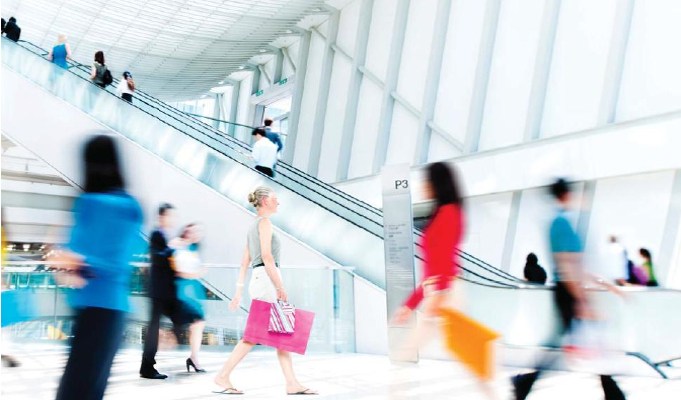
On Wednesday, Shopping Centres Association of India (SCAI) presented SOPs and guidelines to the policy makers of ‘Empowered Group 6’ just before FM’s announcements

The group chaired by Amitabh Kant, CEO, Niti Aayog patiently heard and seemed convinced with the SCAI SOPs and guidelines. Representatives from retail and shopping centre industry included:
– Amitabh Taneja, Chairman & Founder Director, SCAI
– Arjun Sharma, Chairman, Select Group
– Ashish Dikshit, MD, Aditya Birla Fashion & Retail
– Atul Ruia, Chairman, Phoenix Mills
– Dalip Sehgal, CEO, Nexus Malls – a Blackstone Company
– Neel Raheja, Director, K Raheja Corp.
– Rakesh Biyani, Joint MD, Future Retail
– Venkat CK, Managing Director, Titan Co
– Darshan Mehta, President & CEO, Reliance Brands
– Sriram Khattar, Managing Director, DLF Brands
SCAI is of the firm opinion that in this unprecedented situation, the best bet for the government should be to re-open malls, since they are professionally run and can control factors like hygiene and social distancing better than local markets, neighbourhood shops and kirana stores.

 3-Phase Strategy for Re-Opening of Shopping Centres
3-Phase Strategy for Re-Opening of Shopping Centres
Continuing its own efforts to help the sector tide over this period and find workable solutions for the industry, SCAI has created comprehensive SOPs for the reopening of Malls in the country.
The SOPs were prepared by SCAI after several consultations with the captains of the Industry as well as adopted global best practices to ensure that the spread Covid-19 is contained. SCAI is also keen to work together with the Government in putting a formal structure in place to ensure that these SOPs are followed in letter and spirit and the roll out across the states is efficient.
SCAI laid out a three phase plan and SOPs to re-open malls, which it has shared with the Government of India. It has said that malls will open as follows:
Phase 1: Malls will be operational from 12 PM to 9 PM on all days initially and only 1 customer per 75 sq.ft. GLA will be allowed. Only 50 percent of the staff will be inside malls in this first phase. Malls will offer only essential services and products in the first phase of opening, eg:
– Supermarket
– Infant clothing
– Eyewear
– Electronics required for work from home
– Apparel, sportswear & footwear
– Personal care
– Takeaway and home delivery from food courts and restaurants
– Salons & Spas – with 50 percent capacity and prior appointments only.
– Home and furnishing
Phase 2: Malls will open food courts and F&B outlets
Phase 3: Multiplexes, Family Entertainment Centers will become operational
Shopping centres will ensure that:
– All personnel are educated on COVID-19 health and prevention
– They maintain occupancy ceiling to approximately 50 percent of common areas and GLAs
– In case of dine in, all F&B outlets to reduce seating arrangements to 50 percent and maintain placing seating and tables 5 feet apart for all customers to ensure social distancing
– Stores to also ensure social distancing at all times
– Installation of plexiglass at all checkout points
– Encouraging contactless menus and digital invoices
– Restricted parking with use of only 50% of total parking capacity
– Provision of touchless cash points
– Restricted washroom usage policy – Controlled number of customers to be allowed in washrooms as per the size and only alternate urinals to be used. Also, Exhausts in toilets will run for 24 hours
– No promotional activities of any sorts in shopping centre common areas
– The air conditioning in all malls will be tweaked to ensure at least 30 percent of fresh air circulations of treated air and temperatures will be maintained between 24-30 degree centigrade. Return air in all common area units will be cleaned on weekly basis.
Most importantly, all shopping centres will have mandatory isolation rooms – a small dedicated area on site to isolate potential positive cases.
Aside from this, their retail partners will ensure that:
– They provide sensor-based sanitization points at the entrance of the store, cash counter and various other touchpoints within store.
– Promote smart payments as preferred method, encourage digital payment transactions for customer convenience.
– QSRs in food courts to do distance marking for consumers, separate cash and service windows with installation of plexisheets to minimize physical contact and ensure social distancing.
– Training & education to staff on maintaining personal health safety & premise hygiene.


